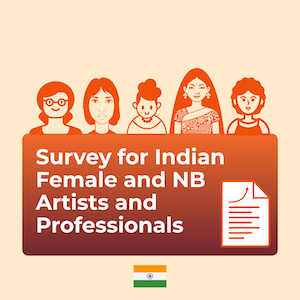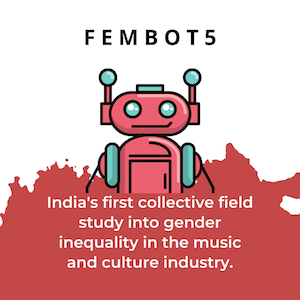With radical roots in the 1980s, almost forty years on, women’s empowerment is a globally visible development concern. Harnessed by corporations, global and local NGOs, philanthropic and government donors, multinational agencies, banks and cultural institutions - women’s empowerment has become akin to a panacea : empowering girls and women is globally championed as a means to drive growth, generate capital, improve child health, enhance women’s skills as mothers as well as to open up opportunities for economic and political engagement. A large part of the action, behind women’s empowerment in international development focuses on the instrumental gains of empowering women and girls. The dominant perspective is based on “what ‘they’ can do for development?” How can women add to economic growth and prosperity, in effect improving their own lives. Across institutions large and small, empowerment is treated as a destination - that can be reached through funding, practice, education and skill development. A development’s equivalent of motorways : fast-track programs that can be rolled out over any terrain. Women’s empowerment is often viewed as an extension of a nation or region’s economic development. Also a significant aid in achieving greater equality in arts, music and culture. However, that framework and mindset often discounts individual needs, challenges and prevailing conditions, that women and girls embody in their existence. Ideology, policy and action in women’s empowerment schemes are top-down in nature. From the privileged class to those underprivileged.
Yet how is such a movement democratic or guarantee horizontal improvement? The institutional models of empowerment often overlook the ‘personal’ and the ‘precarious’ conditions of women, across fields, be they economic, cultural or political. The hidden or personal pathways that women are traversing, at an individual or collective level, creating self-empowerment, remain mostly out of view and discussion. This article is presenting alternative perspectives about women’s empowerment, outside the dominant norms and schemas. We are compelled to look outside the prevailing mantras and mechanisms, which are undermining the true potential and impact of female empowerment.
The ‘right to have rights’
Let us begin by saying that the pathways of empowerment, traversed by women and girls are diverse, full of challenges and rich in experience - thus full of altruistic values. These pathways, organic and self-motivated, numbering in thousands, provide valuable pointers for future policy formation and practice. The mainstream slogan “let women set the agenda” has to be revised as “let every woman set her agenda first”. Empowerment is not something that can be bestowed by others, but is about recognising inequalities in power, asserting the right to have rights - eventually acting collectively or individually to compel structural change, in favour of gender equality. Empowerment has to work in tandem with power-sharing. In any society, the labor conditions of women reflects the final verity of the ‘prevailing female condition’. The index of equality in a society eventually rests on labor rights, and not so much upon the arts and it’s innate privilege. We have to consider the labor of a female construction worker akin to that of a female musician or scientist or accountant or what-have-you profession. Key stake-holders decide the boundaries of empowerment and it’s beneficiaries. Hence, empowerment is in danger of losing its transformative edge, it’s democratic power and calls for a more precise understanding of power, in terms of engagement and practice.
Reciprocal Relationships
Indian feminists Gita Sen and Srilatha Batliwala have argued since the late-1980’s about the ‘empowerment spiral’ - mobilising large-scale transformation based on persistent political, social and cultural action. Such transformations are visible across the world in thousands of ways, yet the gender index remains far from equal, in terms of economic participation, control and output. The duo’s insistence is on sharing power and control - rather than self-mastery and self-assertion. Note that a fair amount of feminist discourses are about the latter and not the former. Sen and Batliwala emphasise that empowerment has to work simultaneously, in challenging hierarchy (patriarchy) and creating access for women and girls. Development policy has to embody what women symbolise, and not the other way around. The preoccupation with successful female role models, across various sectors of industry and culture does not guarantee increased female engagement in society and it’s on-going formation.
The ‘right to have rights’
Let us begin by saying that the pathways of empowerment, traversed by women and girls are diverse, full of challenges and rich in experience - thus full of altruistic values. These pathways, organic and self-motivated, numbering in thousands, provide valuable pointers for future policy formation and practice. The mainstream slogan “let women set the agenda” has to be revised as “let every woman set her agenda first”. Empowerment is not something that can be bestowed by others, but is about recognising inequalities in power, asserting the right to have rights - eventually acting collectively or individually to compel structural change, in favour of gender equality. Empowerment has to work in tandem with power-sharing. In any society, the labor conditions of women reflects the final verity of the ‘prevailing female condition’. The index of equality in a society eventually rests on labor rights, and not so much upon the arts and it’s innate privilege. We have to consider the labor of a female construction worker akin to that of a female musician or scientist or accountant or what-have-you profession. Key stake-holders decide the boundaries of empowerment and it’s beneficiaries. Hence, empowerment is in danger of losing its transformative edge, it’s democratic power and calls for a more precise understanding of power, in terms of engagement and practice.
We can define power as ‘control over material assets, intellectual resources, and ideology’. Across culturally inspired empowerment plans for women and girls, we notice hegemony - of top-down policies, trickle-down endowments and selective appropriation of resources. That cultural imperative benefits a few, yet maroons a vast majority of women and girls - ignoring a huge sector of the female population, consequently the potential and unrealised power in a given society. At this point we must concede, that FEMWAV as an institution is also in cohorts with such predominance and bias. Yet change we must! That women’s empowerment is not a mantra, nor an end-goal serving economic mandates, but a continuous process of human development, towards achieving an equal and open society. "Class barriers are deeply entrenched within institutional and personal networks of empowerment and resource sharing. Hence, we see across nations that very few privileged women are willing to foster or assist a vast demographic of underprivileged women - this is veritable across the culture, arts and entertainment sector as well..." states Aanmona Priyadarshini and Samia Rahim.
Reciprocal Relationships
Indian feminists Gita Sen and Srilatha Batliwala have argued since the late-1980’s about the ‘empowerment spiral’ - mobilising large-scale transformation based on persistent political, social and cultural action. Such transformations are visible across the world in thousands of ways, yet the gender index remains far from equal, in terms of economic participation, control and output. The duo’s insistence is on sharing power and control - rather than self-mastery and self-assertion. Note that a fair amount of feminist discourses are about the latter and not the former. Sen and Batliwala emphasise that empowerment has to work simultaneously, in challenging hierarchy (patriarchy) and creating access for women and girls. Development policy has to embody what women symbolise, and not the other way around. The preoccupation with successful female role models, across various sectors of industry and culture does not guarantee increased female engagement in society and it’s on-going formation.
The duo concludes by saying that empowerment is relational, and that there is a “complex reciprocal relationship” between women’s ‘self-understanding’ and their ‘capacity for self-expression’. Corporate and institutional mandates do not address these relationships, nor the personal and cognitive feelings, consequently failing to bring about sustainable democratic change. Perhaps that achievement cannot be attained with the given norms and popular tropes, which are mostly private in nature, and initiated by key stake-holders, resting upon capital and privilege. The private and institutional mechanisms of empowerment surely impacts the movement, at a local and global level. Back in 1998, Gita Sen warned “The danger here is that the focus of empowerment will shift entirely towards access to external resources, wealth or services, and away from methodologies that would have created sustainable spaces for people to build confidence, freedom and self-esteem…”
New Pathways
Women’s empowerment manifests in thousands of ways, led by a multitude of institutions, agencies and individuals, made of very big to very small scale programs. The versions of empowerment that are most prominent and loudest are by a host of international development agencies, primarily concerned with the acquisition of material means, through which women empower themselves as individuals. The narrative promises the benefits that come, when women put their earning power to the service of their families, communities and national economies. The field is dominated by an array of corporate and development actors - the likes of Walmart, Oxfam, DFID, the Nike Foundation, Bill & Melinda Gates Foundation, Benetton, Plan International, the IMF to name a few - purveying similar slogans, sometimes even in the same words. Witness to a familiar set of tropes, outlining the intrinsic value of women’s empowerment, yet eventually always proceeding to the real business at hand : ‘unleashing potential’ and harnessing the power of millions if not billions of women, as workers. Less we forget that each worker is also an individual, mother, wife, sister and more.
New Pathways
Women’s empowerment manifests in thousands of ways, led by a multitude of institutions, agencies and individuals, made of very big to very small scale programs. The versions of empowerment that are most prominent and loudest are by a host of international development agencies, primarily concerned with the acquisition of material means, through which women empower themselves as individuals. The narrative promises the benefits that come, when women put their earning power to the service of their families, communities and national economies. The field is dominated by an array of corporate and development actors - the likes of Walmart, Oxfam, DFID, the Nike Foundation, Bill & Melinda Gates Foundation, Benetton, Plan International, the IMF to name a few - purveying similar slogans, sometimes even in the same words. Witness to a familiar set of tropes, outlining the intrinsic value of women’s empowerment, yet eventually always proceeding to the real business at hand : ‘unleashing potential’ and harnessing the power of millions if not billions of women, as workers. Less we forget that each worker is also an individual, mother, wife, sister and more.
The neoliberal mantra, that women can also be part of the 'transformative economic effect' as producers and consumers alike, all efforts geared towards growth. A type of growth that is preoccupied with wealth and acquisition and not with individual freedom and potential. Take for example Nike’s Girl Effect, whose charismatic propaganda has deeply influenced advocacy since 2010, having distilled it’s global campaign as a “simple“ solution that promises to “change the course of history”. Nike wants us to believe that “the unique potential of adolescent girls to end poverty for themselves and the world…” Well known is the fact, that multinational clothing giants like Nike, Adidas, H&M, Zara, Benetton etc viciously exploit labor, numbering in millions - factory workers, women and men based in India, Bangladesh, Vietnam, China, Indonesia, Philippines, Nigeria, Mexico etc who earn less than $3 a day individually, while the annual profits made by the philanthropic brands soars into billions of dollars cumulatively. However, it is not the biggest brands and institutions that solely embody such double-standards, the dogma exists across small and medium sized agencies, cultural bodies and even down to individuals, thus perpetuating gender inequality.
40 years on, female empowerment as a global movement, has much to leverage and cover, outside the given mainstream mechanisms. Less we forget, that empowerment of women and girls is about greater justice and equality, always aiming for broader democratisation of power relations in society - eventually reflected in it’s art, music, cinema and culture. That women’s rights are a part of human rights. Empowerment is not based on one formula, nor made of mere statistical validity. “Empowerment is not an end-point, let alone a measurable outcome to which targets can be attached. It is a continuous process, a metaphor of a journey, of many pathways that can be travelled individually or collectively, in which the nature of the terrain, the experience, becomes significant in determining progress…” states Andrea Cornwall, leading a research group at the United Nation’s Unuwider, exploring future possibilities in women’s empowerment. As individuals or institutions, if we truly believe in equality, we are compelled to create new paths, schemas and guidelines. Advocacy, policies and actions, upon which women and girls can self-empower, consequently creating new trails for future generations to follow. Next time you goto a women's convention or a night-club party in celebration of women's empowerment, ask yourself - what good is it? Who is it for? And what about the vast number of women who are always excluded from all such charades and institutional piety?
Sources of information / essays by -
Gita Sen and Srilatha Batliwala (India)
Andrea Cornwall (UK)
Aanmona Priyadarshini and Samia Rahim (India and Bangladesh)
Cecilia Sardenberg (Sweden)
40 years on, female empowerment as a global movement, has much to leverage and cover, outside the given mainstream mechanisms. Less we forget, that empowerment of women and girls is about greater justice and equality, always aiming for broader democratisation of power relations in society - eventually reflected in it’s art, music, cinema and culture. That women’s rights are a part of human rights. Empowerment is not based on one formula, nor made of mere statistical validity. “Empowerment is not an end-point, let alone a measurable outcome to which targets can be attached. It is a continuous process, a metaphor of a journey, of many pathways that can be travelled individually or collectively, in which the nature of the terrain, the experience, becomes significant in determining progress…” states Andrea Cornwall, leading a research group at the United Nation’s Unuwider, exploring future possibilities in women’s empowerment. As individuals or institutions, if we truly believe in equality, we are compelled to create new paths, schemas and guidelines. Advocacy, policies and actions, upon which women and girls can self-empower, consequently creating new trails for future generations to follow. Next time you goto a women's convention or a night-club party in celebration of women's empowerment, ask yourself - what good is it? Who is it for? And what about the vast number of women who are always excluded from all such charades and institutional piety?
Sources of information / essays by -
Gita Sen and Srilatha Batliwala (India)
Andrea Cornwall (UK)
Aanmona Priyadarshini and Samia Rahim (India and Bangladesh)
Cecilia Sardenberg (Sweden)





















